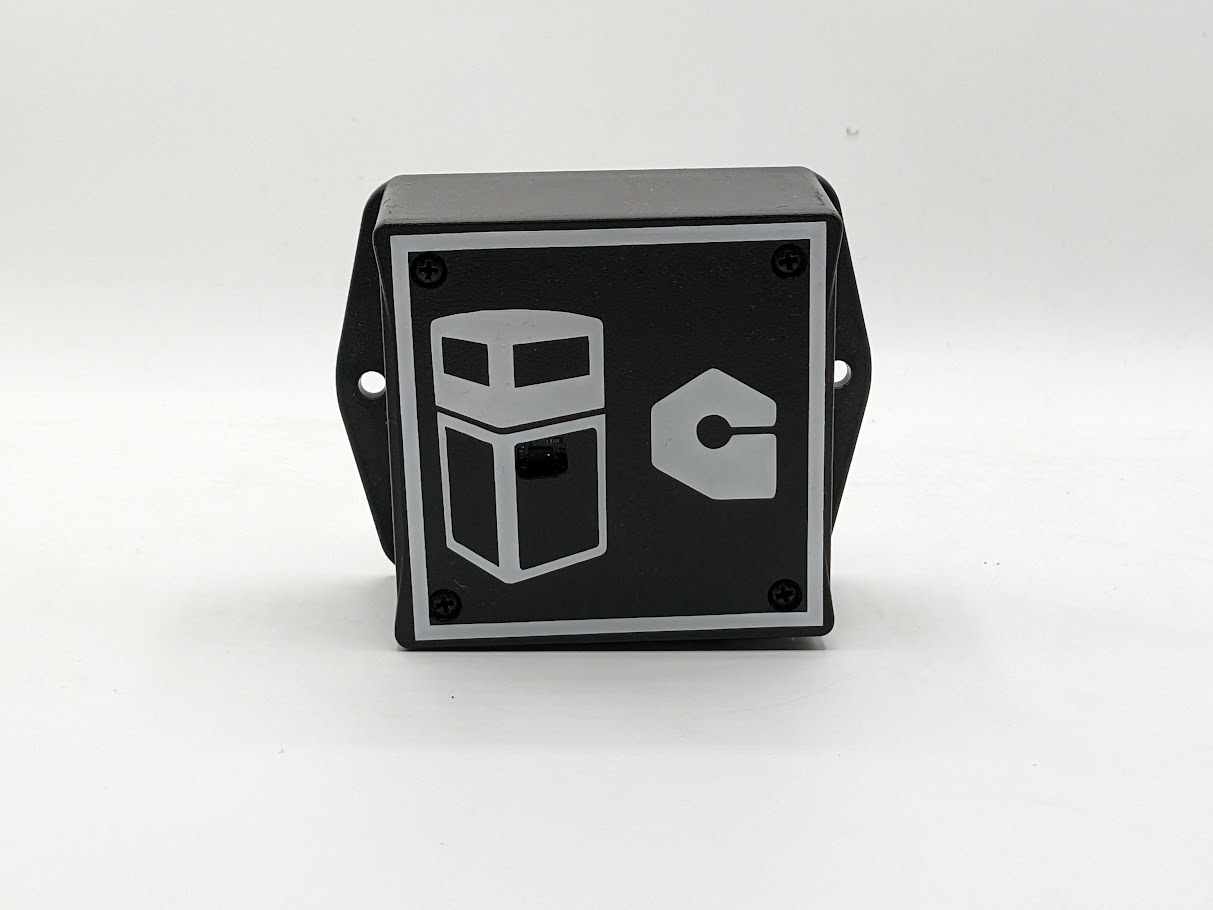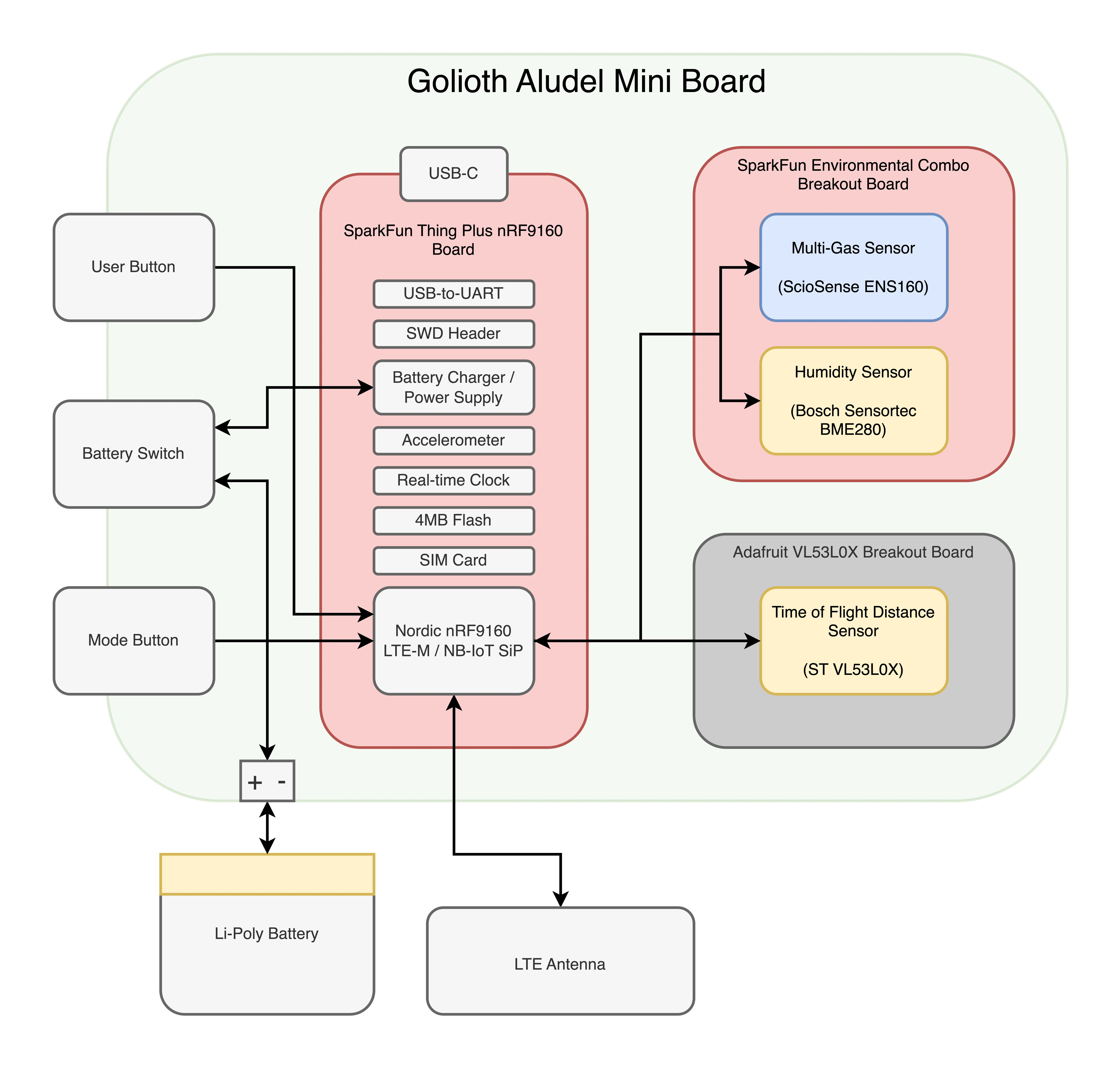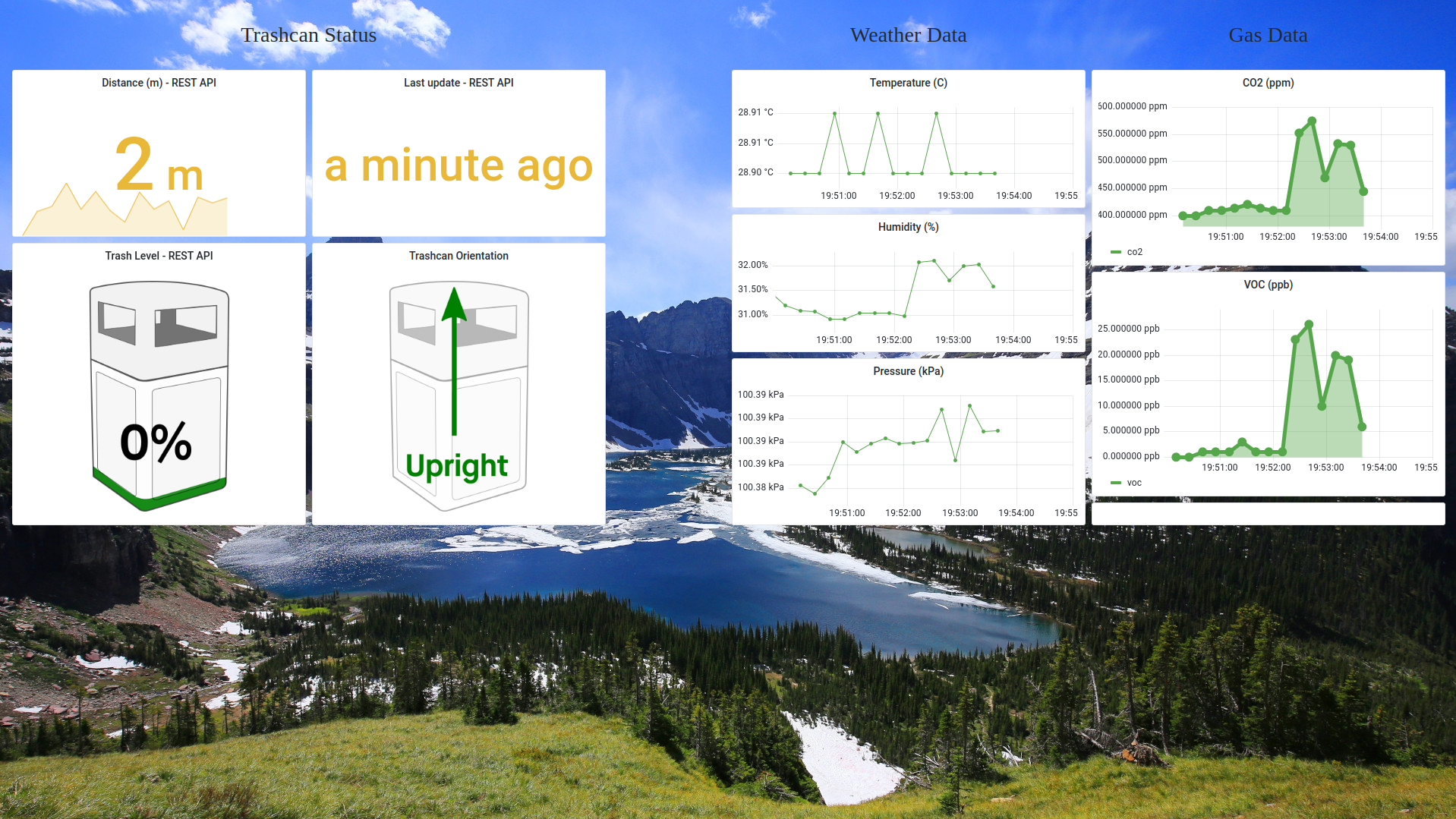Trashcan Monitor
Overview
This Reference Design exists to help municipalities, state parks, and other outdoor monitor locations monitor the level of trashcans.

Business Use Case
Having a remote monitor of trashcans cuts down on the maintenance required, especially for remote locations that would be costly to check using a traditional trash truck (cost of fuel).
This Reference Design also includes other sensors onboard that could be used to help monitor locations for weather and the status of a trashcan (including orientation).
Blog post
This project was also described in our blog post titled IoT Trashcan Monitor: A Golioth Reference Design
How we built it
Modular Hardware
The reference design hardware is built using the Golioth Aludel Mini prototyping platform, which integrates an Adafruit Feather-compatible processor module and two MikroE Click sensor boards into a compact enclosure. It also includes the Ostentus front panel that features an ePaper display for sensor readings, back-lit LED indicators, and capacitive touch buttons. We designed this platform to demonstrate how it’s possible to quickly develop a proof-of-concept using widely available off-the-shelf modules. You'll find step-by-step instructions below showing how you can build a similar prototype yourself using widely-available development boards from our partners.
For low-power cellular connectivity, we’re using the same SparkFun nRF9160 Thing Plus module used in other Golioth reference designs. This feather-compatible module integrates the Nordic nRF9160 System-in-Package (SiP), featuring an Arm Cortex-M33 application processor, an integrated LTE modem, and a GNSS receiver for cellular-based location-tracking. The nRF9160 is fully supported in Zephyr, and has the highest level of support in the Golioth platform (Continuously Verified).
This reference design integrates three off-the-shelf sensor breakout boards:
- Adafruit VL53L0X Breakout Board
- Sparkfun Environmental Combo Breakout Board
- DFRobot Gravity LIS2DH Breakout Board
Device Photos

Open-source Firmware
The firmware source code and pre-built firmware images for this reference design are available on GitHub under a permissive Apache-2.0 license.
The Trashcan Monitor firmware is based on the Golioth Reference Design Template. Changes from the upstream template are periodically pulled into new releases of this firmware. Check out the firmware CHANGELOG for a detailed list of changes included in each release.
Data Visualization

The Grafana dashboard connects to the Golioth REST API to retrieve data from the Trashcan Monitor. It displays various metrics such as trashcan orientation, fill level, temperature, humidity, pressure, as well as Carbon Dioxide (ppm) and Volatile Organic Compounds (ppb) levels.
Next steps
Build it yourself
We provide follow-along guides showing how to build this reference design using widely available off-the-shelf development boards from our partners. We call this Follow-Along Hardware, and we think it's one of the quickest and easiest ways to get started building an IoT proof-of-concept with Golioth.
You will learn how to assemble the hardware, flash a pre-built firmware image onto the device, and connect to the Golioth cloud in minutes. The follow-along hardware runs the same open-source firmware as the custom Golioth hardware described above, and we provide instructions on how to build it yourself if you want to make changes for your specific application.
To get started, choose one of the follow-along guides below:
Request a demo
This Trashcan Monitor reference design is a great starting point for building your own proof-of-concept. The next step is to integrate the components used in the follow-along hardware into your own custom hardware implementation and build a custom firmware image that connects your device to the Golioth Cloud.
If you would like a demo of this reference design, please contact [email protected].